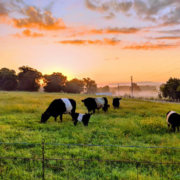Demystifying Regenerative Grazing at BDA Farm
 Print This Post
Print This Post
By Linda Coffey, Livestock Specialist
Visiting other farms is always a joy and an education for me. I recently had the pleasure of visiting BDA Farm in Uniontown, Alabama, for a day-long workshop where we toured the farm and learned about its regenerative practices that build soil health and increase productivity and profitability of the farm. The tour was a follow-up to a 4-hour virtual workshop, both led by Dr. Allen Williams, a sixth-generation family farmer and CEO of BDA Farm.
We watched cattle in high-density, short-duration grazing. Surprised by how tall the forage was, I learned that it had been rested for around 90 days. The goal of the grazing strategy is, first, to have the whole herd on a small area briefly, until it reaches the desired level of animal impact, and then open up the paddock to provide the day’s allotment.
The cattle were sleek and healthy, and I was impressed at the plant diversity and number of insects and birds moving with the cattle. Dr. Williams showed us the area previously grazed and used his shovel to show us how he checks progress, looking at the color, smell, aggregation, earthworms, and more. In four years of managing this way, they are seeing great improvements in all the indicators. One tour participant was a local farmer who recounted that before it became BDA Farm, the land was badly misused and had extensive erosion. Looking around the pastures with waist-high grass, it was hard to imagine this healthy land was only five years ago suffering so badly.
Dr. Williams explained that adaptive stewardship and changing the grazing pressure helps mimic the way nature works and favors diversity rather than monoculture. While there is no one-size-fits-all guideline, we must be mindful of soil health principles and processes that improve the land. One principle that resonated with me was that of compounding: any action we take on our land will have compounded impacts, positive or negative. For example, by allowing ample rest time, we:
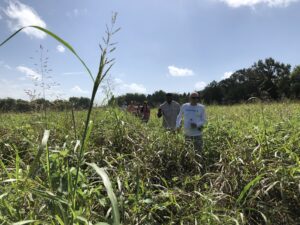
Participants at BDA Farm tour. Photo: NCAT
- Allow root growth, benefiting the soil microbes, aggregation, water absorption, drought tolerance and resilience, and soil organic matter
- Allow leaves to photosynthesize, benefiting the soil through root exudates, providing ample feed for the livestock and blooming plants for pollinators and other insects
- Allow dormant seeds in the seed bank to sprout and grow, building plant diversity, which helps support a diverse microbial population in the soil and diverse insect population aboveground
- Provide plenty of nutritious forage that allows livestock to thrive, encouraging health and productivity
We also saw the 5,000-hen egg operation, gardens, high tunnels, and the pastures where finishing cattle were. Those cattle grade an astonishing 95% choice or prime at about 24-28 months of age, attesting to the nutritive value of the forages and the success of the grazing practices.
BDA Farm is regenerating soil and turning what was a wasteland into a beautiful, life-filled and life-giving place. It provides full-time jobs for 15 employees, who project an aura of competence, care, pride, and enthusiasm for the work they are doing, and camaraderie with each other. I can imagine using the regenerative soil health principles successfully on a much smaller scale on my family’s farm, and this was a great example of what can be done with courage, investment, and commitment. I am inspired!
Resources:
Regenerative Grazing/Livestock
Soil Health and Adaptive Grazing with Dr. Allen Williams
Demystifying Regenerative Grazing and Soil Health
Sustainable Agriculture Research and Education (SARE)
This blog is produced by the National Center for Appropriate Technology through the ATTRA Sustainable Agriculture program, under a cooperative agreement with USDA Rural Development. This blog was also made possible in part by funding from a Southern SARE PDP grant (ES20-154). ATTRA.NCAT.ORG.

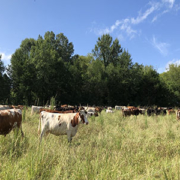
 NCAT
NCAT
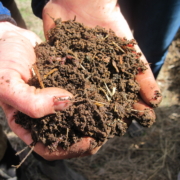

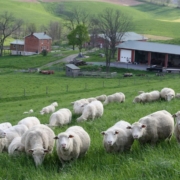 Courtesy Kathy Solder
Courtesy Kathy Solder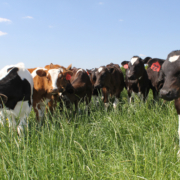 NCAT
NCAT